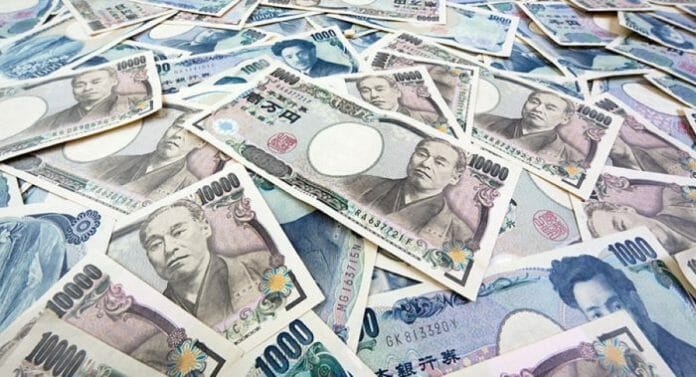The yen remained hunkered just below the psychologically important barrier of 145 per U.S. dollar on Monday, while the dollar was on the back foot after U.S. economic data last week showed slightly easing inflation and consumer spending.
The yen weakened 0.03 per cent to 144.38 per dollar in early Asian hours to kick start the second half of the year having dropped 9 per cent against the dollar in the first six months of the year.
Against the euro, the yen was hovering at 157.495, below the 15-year low of 158 it touched last week. It was at 183.47 per sterling, just below the seven-and-a-half-year low of 183.86 it hit on Friday.
The Asian currency briefly passed 145 per dollar on Friday, hitting a near eight-month low of 145.07 as investors keep an eye on whether Japanese authorities will intervene in the currency market.
Finance Minister Shunichi Suzuki on Friday said Japan would take appropriate steps in response to excessive yen weakening, in the latest comment from government ministers and officials.
“Intervention is best conceived of as an escalation ladder,” said Marc Chandler, chief market strategist at Bannockburn Forex.
“Among the highest rungs is the coordinated intervention… The low rungs on the escalation ladder are different types of verbal intervention.”
Japan bought yen in September, its first foray in the market to boost its currency since 1998, after a Bank of Japan (BOJ) decision to maintain ultra-loose policy drove the yen as low as 145 per dollar.
It intervened again in October after the yen plunged to a 32-year low of 151.94.
Still, business sentiment improved in the second quarter as easing supply constraints and the removal of pandemic curbs lifted factory output and consumption, a central bank survey showed, a sign the economy was on course for a steady recovery.
Investor focus this week will be on the minutes of the U.S. Federal Reserve’s June meeting due on Wednesday.
The central bank decided to leave interest rates unchanged in its June meeting but hinted that borrowing costs may still need to rise by as much as half of a percentage point by the end of the year.
Data on Friday showed cooler-than-expected inflation in May, while consumer spending abruptly decelerated, providing further evidence that the Fed’s hikes are having their desired effect.
The personal consumption expenditures (PCE) price index gained 0.1 per cent for the month after a 0.4 per cent rise in April. It advanced 3.8 per cent on an annual basis, slowing from a revised 4.3 per cent the prior month.
The PCE gauges were still well above the Fed’s 2 per cent inflation target, according to Reuters.
“The U.S. economy is not slowing as forecast,” Citi strategists said in a client note. “Surprisingly strong job growth is keeping labour markets tight while providing the nominal spending power to drive services consumption.”
Markets are pricing in a 84 per cent chance of the Fed hiking rates by 25 basis points in its July meeting, CME FedWatch tool showed.
Investor attention will also be on the Labor Department’s Job Openings and Labor Turnover Survey, or JOLTS and monthly payrolls report due later this week that will help gauge the labour market in the United States.
Against a basket of currencies, the dollar was at 102.94, having dropped 0.4 per cent on Friday. The euro eased 0.04 per cent to $1.0906. Sterling last fetched $1.2694, down 0.08 per cent on the day.
In cryptocurrencies, bitcoin last rose 1.02 per cent to $30,699.00. Ethereum last rose 0.88 per cent to $1,943.94.
The Australian dollar fell 0.14 per cent to $0.666, while the New Zealand dollar rose 0.16 per cent to $0.613.









